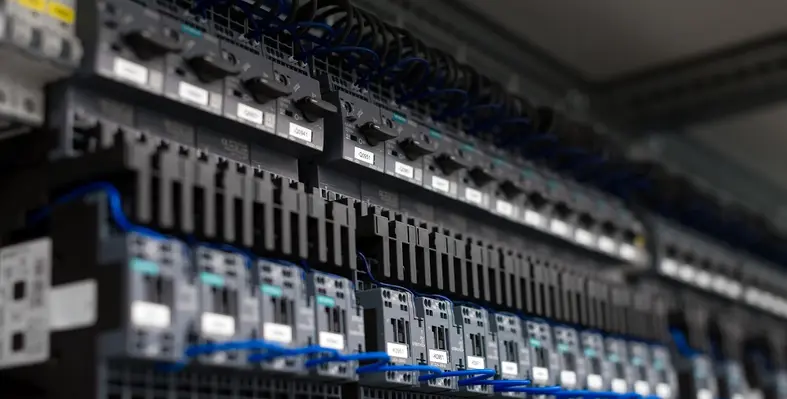The Middle East data centre market by investment is expected to grow at a CAGR of 7% during the period 2020-2026, according to a report by Research and Markets
The data centre market has observed a steady growth due to the outbreak of the COVID-19 pandemic, resulting in heightened access to internet-related services aided by nationwide lockdowns and restrictions. IoT-enabled devices witnessed high acceptance for monitoring and surveillance purposes, especially in the healthcare sector, during the pandemic.
Government agencies have also contributed to the growth of cloud-based services in the Middle East. In Kuwait, the Ministry of Health (MoH), the Central Agency for Information Technology (CAIT), collaborated with Zain to launch an application - Shlonik to monitor citizens that have returned to the country.
The growing adoption of cloud, IoT, big data in the wake of the COVID-19 has increased colocation investments in the region. Cloud, social media and video conferencing service providers have contributed majorly to data generation. Many enterprises operating in the cloud are migrating to colocation data centres to operate hybrid infrastructure services.
Middle East data centre market segmentation
The Middle East data centre market research report includes a detailed segmentation by IT infrastructure, electrical infrastructure, mechanical infrastructure, cooling technique, cooling systems, general construction, tier standards, geography. The Middle East IT infrastructure market expects to grow at a CAGR of over 6% during 2020-2026.
The server market is shifting slowly from rack-based to blade servers to support a high-density operating environment. This is because of the increased usage of IoT, big data analytics, artificial intelligence, and machine learning by enterprises across the Middle Eastern market. Enterprises prefer servers that can reduce space in the data centre environment without affecting performance.
The UPS market in the Middle East anticipates crossing US$89mn during the forecast period. There has a steady rise in the deployment of edge computing; also, colocation operators are investing in the region, which increases the demand for high-capacities UPS in the region. The use of 750-1,500 kVA systems has witnessed high adoption along with less than 500 kVA UPS systems. The adoption of lithium-ion batteries is also likely to increase during the forecast period as the price of these batteries is expected to decline during the forecast period.
Cooling systems, including water-cooled chillers, CRAH, and cooling towers, are installed with N+20 redundancy in the Middle East region. Most facilities in the region design to cool servers via water-based cooling techniques. The growing construction of data centres in the UAE is a key factor in developing multiple chillers, cooling towers, and CRAH units. In Saudi Arabia, data centres? construction will increase the adoption of multiple chillers, cooling towers, and CRAH units.
Newly constructed data centre facilities will use advanced air-based cooling techniques because of the high temperature. Data centres in Turkey adopt CRAC & CRAH units and chiller units. In terms of redundancy, most operators use N+1 and N+2 cooling redundancy. Besides, operators are likely to deploy dual water feed for efficient and uninterruptable operations.
Brownfield development is more cost-effective than greenfield development in the Middle East. In the Middle Eastern region, data centre commissioning service providers follow standard operating procedures, depending on the depth of commissioning required in the facility. The Middle East data centre market is mostly dominated by small data centres with less than 15 MW power centres. The building & engineering design market is expected to reach over US$32mn in 2026, growing at a CAGR of approx-7%.
The increasing demand for reliable, efficient, and flexible building infrastructure among service operators is expected to influence its growth. The adoption of physical security apparatus is increasing to protect the data and information. BFSI, telecommunication, and healthcare are the most vulnerable sectors for intrusions and breaches. Sensors and video cameras are installed for surveillance in data centres in the region.
The use of artificial intelligence and machine learning in the data centre is driving the DCIM solutions market. DCIM solutions improve efficiency, monitor power consumption, and predict system failures. They are becoming a major part of data centre operations as they monitor critical elements such as power, cooling, and IT infrastructure.
Most data centres in the UAE are Tier III certified or built according to Tier III standards. Several data centres in Saudi Arabia are built according to Tier III or Tier IV standards and have a minimum redundancy of N+1 in power and cooling infrastructure. Tier III data centres are equipped with UPS systems redundancy of N+1.
The majority of modern data centres in Turkey are developed according to Tier III standards, with a minimum of N+1 redundancy in power infrastructure. A few data centres operate 2N power infrastructure or have additional capacity to commission 2N infrastructure solutions based on the customer?s demand. Most developments in Turkey are greenfield projects, whereas modular data centres are confined to enterprise on-premises deployments.
For more information about this report visit https://researchandmarkets.com/r/6pglwg





